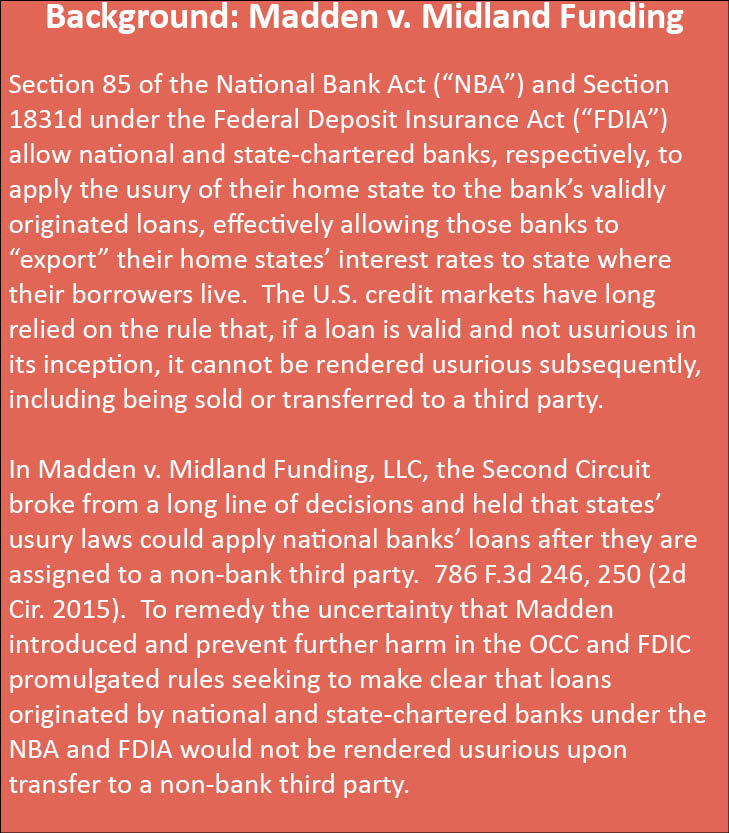SFA Welcomes Court Rulings in Favor of the OCC and FDIC on “Valid-When-Made” Rulemakings
article by Structured Finance Association
On February 8, 2022, the U.S. District Court for the Northern District of California issued two separate Orders in favor of the Office of the Comptroller of the Currency (OCC) and the Federal Deposit Insurance Corporation (FDIC) on cases involving similar rulemakings adopted separately in 2020 by each Agency. The central issue in the OCC case (Case No. 4:20-cv-05200-JSW) and the FDIC case (Case No. 4:20-cv-05860-JSW) was the Agencies’ “Valid-When-Made” (VWM) rules: Permissible Interest on Loans that are Sold Assigned or Otherwise Transferred (OCC) and Federal Interest Rate Authority (FDIC).
These rules provided the market with certainty that federal preemption of state usury laws continues to apply to loans originated by national and state-chartered banks even after they are sold or assigned to non-banks. It addresses the market uncertainty created by the Madden v Midland Funding case in which SFA filed a joint amicus brief.

Summary:
In both cases, the Plaintiffs were a group of States Attorneys General – California, Illinois, and New York – challenging the validity of the FDIC and OCC rulemakings. The Plaintiffs alleged that both Federal Agencies violated the Administrative Procedure Act. In particular, the Plaintiffs claimed that each rulemaking (i) exceeded the authority of the Federal Agency, (ii) was arbitrary and capricious, and (iii) violated federal rulemaking standards.
District Court applied a Chevron analysis in both cases to determine whether the FDIC and OCC acted within the authority delegated by Congress, and that actions by each agency were a permissible construction of the authorizing statute.
In each case, the Court denied the Plaintiffs’ motions for summary judgment, granting the Defendants’ cross-motions for summary judgment while rejecting arguments that the Plaintiffs made. The Court’s rulings align with the arguments set forth by SFA and industry participants in the amicus brief filed in the FDIC case and that which was filed in the OCC case. These briefs provided the court with the perspective of SFA members and the industry on the importance of the Valid-When-Made doctrine for lending markets, including the impact on the availability of credit to consumers and businesses without the clarity the rulemaking provides.

